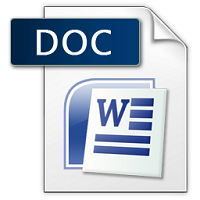Original price was: ₹500.00.₹350.00Current price is: ₹350.00.
Note – Scroll down and match your questions
Note- Unique Ready to Upload
700 per assignment
Unique order via whatsapp only
Whatsapp +91 8791490301
Description
Operations and Supply Chain Management
April 2025 Examination
- Explain the Sales and Operations Planning (S&OP) process in the context of the automotive industry by discussing strategies for adjusting production capacity and managing fluctuating demand. Highlight how quantitative techniques for aggregate planning are applied in the automotive sector, considering the hierarchical nature of planning from strategic to operational levels. (10 marks)
Ans 1.
Introduction
Sales and Activities Planning (S&OP) is crucial for aligning sales projections with manufacturing and supply chain operations. The automobile sector is extremely competitive and demand-sensitive, therefore S&OP is essential to meeting demand effectively while reducing costs and optimising profits. Effective S&OP is needed to manage inventory levels, production capacity, and customer satisfaction given the industry’s complicated supply networks, JIT manufacturing, and variable consumer demand.
The automobile industry
It is only half solved
Buy Complete from our online store
https://nmimsassignment.com/online-buy-2/
NMIMS Fully solved assignment available for session APRIL 2025,
your last date is 26th March 2025.
Lowest price guarantee with quality.
Charges INR 299 only per assignment. For more information you can get via mail or Whats app also
Mail id is [email protected]
Our website www.aapkieducation.com
After mail, we will reply you instant or maximum
1 hour.
Otherwise you can also contact on our
Whatsapp no OR Contact no is +91 8755555879
- Describe the role of Enterprise Resource Planning (ERP) and Product Lifecycle Management (PLM) in the pharmaceutical industry. Discuss their applications in enhancing operational efficiency, regulatory compliance, and innovation management. Highlight how these systems contribute to maintaining competitiveness in a highly regulated and dynamic sector. (10 marks)
Ans 2.
Introduction
The pharmaceutical industry operates in a highly regulated and dynamic environment where efficiency, compliance, and innovation are critical to maintaining competitiveness. Enterprise Resource Planning (ERP) and Product Lifecycle Management (PLM) play a crucial role in managing the complexities of pharmaceutical operations. ERP integrates various business processes, such as procurement, inventory management, production planning, and financial reporting, into a single cohesive system. On the other hand, PLM facilitates the management of a
3a. Examine the concept of Lean Systems in the healthcare sector by discussing the basic elements of Lean Systems, strategies for successful implementation, and their application in improving operational efficiency and patient care in hospitals. (5 marks)
Ans 3a.
Introduction
Lean Systems in healthcare focus on eliminating waste, improving efficiency, and enhancing patient care. Originating from manufacturing principles, Lean in healthcare aims to optimize workflows, reduce unnecessary processes, and ensure the highest quality of care with minimal resource wastage. Hospitals face challenges such as long patient wait times, inefficient resource utilization, and operational bottlenecks. By implementing Lean strategies, healthcare providers can enhance service delivery, improve patient experiences, and create a streamlined, cost
3b. Analyze the concept of scheduling in healthcare sector by discussing key scheduling techniques and their application in optimizing resource utilization, reducing patient waiting times, and improving service quality in hospitals. (5 marks)
Ans 3b.
Introduction
Effective scheduling in healthcare is critical for optimizing resource utilization, reducing patient wait times, and improving service quality. Given the complexity of hospital operations, scheduling ensures that patients, medical staff, and facilities are efficiently coordinated to enhance overall service delivery. Poor scheduling can lead to overcrowding, delays in treatment, and staff burnout. By implementing robust scheduling techniques, healthcare providers can


